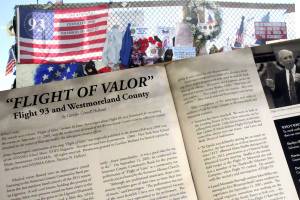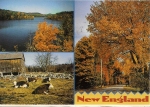CAROLYN’S COMPOSITIONS
OP-ED ARTICLES Part 1: DISCUSSION
You want to have your say.
Especially when you are outraged over an issue and feel impotent to deal with it, you want to have a way to have your say.
One means of accomplishing this it to write an op-ed letter and submit it to your local newspaper. Your ideas and input can have an astounding effect on the readers of your op-ed.
However, like anything else, there are proper and improper ways to write op-eds. Op-ed Part I provides background information on op-eds. Op-ed Part II will provide information on how to write an op-ed.
The term op-ed means opposite the editorial page, the newspaper site of opinion articles. Op-ed articles, published by newspapers and online, are pieces that express opinions of a named writer who is usually unaffiliated with the newspaper’s editorial board. They discuss diverse opinions on timely news from international to local issues.
NOTE: This is the first in a three-part series on writing op-ed articles. It discusses the ins and outs of this genre. The second article is a How To Write Op-ed, and the third is an actual op-ed on an issue I am particularly interested in.
The first op-ed page was created by Herbert Bayard Swope (The New York Evening World) in 1921 as a catchall for book reviews and obituaries.
The opinionated editorial essay is one of the few newspaper open to anyone with something to say about an issue they are concerned about.
The Wall Street Journal’s op-ed submission guidelines state, “The article should be a strong argument about an issue in the news.” As long as it is strongly opinionated with a valid argument, almost any topic is considered worthy of print.
Op-eds differ from letters to the editor in that
- they are longer
- authors can more fully develop their arguments
- they carry more weight and authority
Op-ed articles are important because they
- offer people not affiliated with the editorial staff an opportunity to share an authoritative view or perspective on current events or local concerns.
- are an excellent way to get (an issue’s perspective) into the news.
- offer alternate positions, generally from an expert in the industry or subject area (or occasionally a more general reader in the case of local news angles).
- raise awareness by bringing attention to political, social, or other issues of particular importance to both the writer of the op-ed and the public they’re trying to reach** In a general sense, op-eds are offered to educate members of the public about an issue, beyond what the media outlet may have been covering independently
- can have an astounding influence on readers
- offer the author exposure by the simple act of his/her name and thoughts shared publicly through the media
- published op-ed articles allow the author to state he is published
- offer image-building—by helping to brand the author of the piece as an authority source on the particular issue at hand.
One key to writing op-ed articles is their timeliness in dealing with issues. If they are not timely with the news— current events or popular topics—papers will not print them because what’s hot in the news this week may become dull or over-analyzed by next week.
Thus, a quick submission is essential. Crucial, in fact.
~~~~~~~~~~~~
You might be stirred to write an op-ed on an issue that is close to you. Or you just might want to (more…)


